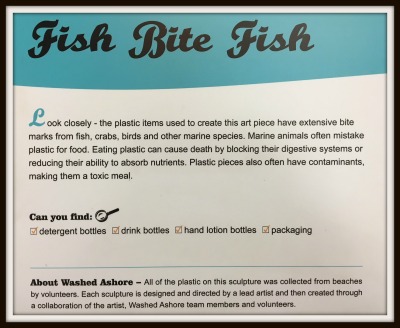The Facilitator Role: Shifting Harmful Situations to Healthy Ones



 This is a story about a woman who changed everything. She took something that seemed impossible, and turned it into the most amazing project that a whole community got behind. (See her project here: www.washedashore.org) The model of this project could be used anywhere in the world. We, as facilitators can be agents to help communities and organizations do these types of projects!
This is a story about a woman who changed everything. She took something that seemed impossible, and turned it into the most amazing project that a whole community got behind. (See her project here: www.washedashore.org) The model of this project could be used anywhere in the world. We, as facilitators can be agents to help communities and organizations do these types of projects!
And, as facilitators, we are there to help people change the world – one project at a time. Don’t ever forget the power we can offer to groups who have great missions, or who have great people who want to do even better things.
The Importance of a Special Welcome
This representation of a whale skeleton in the gallery is made up of washed up plastic objects and forms a welcome entrance at beginning of the “Washed Ashore” gallery! Use this image and think of yourself as the facilitator who carefully chooses their opening visuals and statement to say: “This session is special and everyone’s presence is welcome and needed. Please come in!”

Thoughtful & Creative Tool Adaptations
Volunteers gather every afternoon Thursday – Saturday in this free gallery using drills, wire and screws to put the washed ashore, carefully chosen pieces together to form part of a larger sculpture. This is like the facilitator carefully choosing and repurposing (i.e., finding a new way to use) an old tool or technique to put into a larger beautiful agenda.


From Ugly to Meaningful
If you look carefully, you can see many old flip flops (plastic sandals) in this mural. As facilitators, we can help a group take something (a system, behaviors, worn-out teams…) that has become ugly or unproductive and turn it into something meaningful!

Remove Distractions
Here is a flip flop that has been munched on by likely many sea creatures. They all thought it was good food. Sometimes we work with groups that are working on the wrong priorities and getting distracted by the shiny objects (i.e. colorful flip flops) but not really able to focus on the most important mission focused tasks. As facilitators we can gently encourage the group to examine where and why they’re spending their energy and see if it is appropriate to this moment in their history/life cycle.


Moment to Moment Assessment
Here the volunteer team has put together a forlorn sea turtle who is trapped in the fisherman’s net and stranded atop a dead sea coral garden. You can tell the coral has died because it is white and has lost its brilliant colors. The coral is all styrofoam in this exhibit. As facilitators, we sometimes run into a situation as bleak as this one. Sometimes it is evident to us as facilitators before we work with the group. Sometimes it shows up in the middle of your session. We need two things as facilitator-artists: 1) as much as possible, assess the potential damage that exists with the group before you facilitate so that you choose the right stance and methods to guide the group out of its misery (like the fate of this sea turtle). And 2) however prepared we are, there will be surprises. Our job is to be nimble and agile enough to think on our feet and get the group out of this mess.

Every Action Counts
This poster comes from www.learningfundamentals.com.au. The website gives permission to use it if you make a donation. We did! Please reference it to help you reduce your consumption of plastic and ensure the sea has less of it. For facilitators, this means that even small actions can make a huge difference to the group if we pay attention to the timing and delivery of these small actions.


